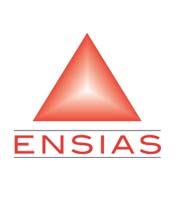- Accueil
-
L'Ecole
-
FORMATIONS
-
FORMATION INGENIEUR
-
Nouvelles filières offertes
- Ingénierie Intélligence Artificielle (2IA)
- Smart Supply Chain & Logistics (2SCL)
- Business Intelligence & Analytics (BI&A)
- Génie de la Data (GD)
- Génie Logiciel (GL)
- Ingénierie Digitale pour la Finance (IDF)
- Smart System Engineering (SSE)
- Data and Software Sciences (D2S)
- Cybersécurité, Cloud et Informatique Mobile (CSCC)
- REGLEMENT DES ETUDES DE L’ENSIAS CYCLE INGENIEUR
-
Nouvelles filières offertes
-
FORMATION INGENIEUR
- FORMATION CONTINUE
-
Recherche
- INTERNATIONAL
- ENTREPRISES
- VIE ESTUDIANTINE
- BIBLIOTHEQUE
LES DERNIÈRES INFORMATIONS
Deep hybrid architectures for binary classification of medical breast cancer images
| Titre | Deep hybrid architectures for binary classification of medical breast cancer images |
| Publication Type | Journal Article |
| Year of Publication | 2022 |
| Authors | Zerouaoui, H, Idri, A |
| Journal | Biomedical Signal Processing and Control |
| Volume | 71 |
| Mots-clés | accuracy, algorithm, Article, augmentation index, Binary classification, biopsy technique, Breast Cancer, Breast Cancer Histopathological Image Classification, Classification (of information), Classification algorithm, classifier, Cluster computing, clustering algorithm, Clustering algorithms, colloid carcinoma, Computer aided diagnosis, Computer architecture, construct validity, contrast limited adaptive histogram equalization, Convolutional neural network, Convolutional neural networks, deep hybrid architecture, Deep learning, Deep neural networks, Diseases, ductal carcinoma, external validity, Extraction, F1 score, Feature extraction, Features extraction, feed forward neural network, fibroadenoma, fine needle aspiration biopsy, histogram, Histological images, histology, Hybrid architectures, Image classification, image processing, Images processing, internal validity, learning algorithm, Learning algorithms, Learning techniques, lobular carcinoma, Machine learning, measurement precision, Medical imaging, MLP classifiers, Mortality rate, Network architecture, papillary carcinoma, Pathological images, phyllodes tumor, recall, residual neural network, scoring system, Scott Knott, Support vector machines |
| Abstract | The diagnosis of breast cancer in the early stages significantly decreases the mortality rate by allowing the choice of adequate treatment. This study developed and evaluated twenty-eight hybrid architectures combining seven recent deep learning techniques for feature extraction (DenseNet 201, Inception V3, Inception ReseNet V2, MobileNet V2, ResNet 50, VGG16, and VGG19), and four classifiers (MLP, SVM, DT, and KNN) for a binary classification of breast pathological images over the BreakHis and FNAC datasets. The designed architectures were evaluated using: (1) four classification performance criteria (accuracy, precision, recall, and F1-score), (2) Scott Knott (SK) statistical test to cluster the proposed architectures and identify the best cluster of the outperforming architectures, and (3) the Borda Count voting method to rank the best performing architectures. The results showed the potential of combining deep learning techniques for feature extraction and classical classifiers to classify breast cancer in malignant and benign tumors. The hybrid architecture using the MLP classifier and DenseNet 201 for feature extraction (MDEN) was the top performing architecture with higher accuracy values reaching 99% over the FNAC dataset, 92.61%, 92%, 93.93%, and 91.73% over the four magnification factor values of the BreakHis dataset: 40X, 100X, 200X, and 400X, respectively. The results of this study recommend the use of hybrid architectures using DenseNet 201 for the feature extraction of the breast cancer histological images because it gave the best results for both datasets BreakHis and FNAC, especially when combined with the MLP classifier. © 2021 Elsevier Ltd |
| URL | https://www.scopus.com/inward/record.uri?eid=2-s2.0-85125746862&doi=10.1016%2fj.bspc.2021.103226&partnerID=40&md5=b9b74d0dcb135861bc2e3d820f836efa |
| DOI | 10.1016/j.bspc.2021.103226 |
Revues:
LIENS UTILES
Localisation
Contactez-nous
ENSIAS
 Avenue Mohammed Ben Abdallah Regragui, Madinat Al Irfane, BP 713, Agdal Rabat, Maroc
Avenue Mohammed Ben Abdallah Regragui, Madinat Al Irfane, BP 713, Agdal Rabat, Maroc
![]() Télécopie : (+212) 5 37 68 60 78
Télécopie : (+212) 5 37 68 60 78
![]() Secrétariat de direction : 06 61 48 10 97
Secrétariat de direction : 06 61 48 10 97
Secrétariat général : 06 61 34 09 27
Service des affaires financières : 06 61 44 76 79
Service des affaires estudiantines : 06 62 77 10 17 / n.mhirich@um5s.net.ma
CEDOC ST2I : 06 66 39 75 16
Résidences : 06 61 82 89 77
- Compteur de visiteurs:634,781
Education - This is a contributing Drupal Theme
Design by WeebPal.
Design by WeebPal.



































